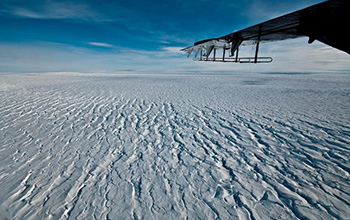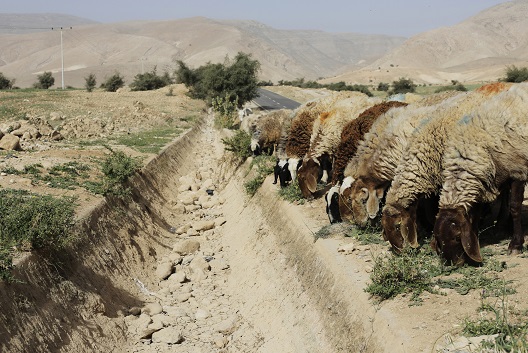Climate scientists last week issued one of the most urgent and dire warnings yet about the impending risks facing the world from global heating. Some of Antarctica’s most massive glaciers are moving toward collapse into the sea.
The continent of Antarctica contains the vast majority of the planet’s freshwater, and in recent years, the ice there has been melting at an accelerated rate. Scientists have watched as the ice shelf holding back the Pine Island glacier has been thinning, with its motion toward the sea accelerating dramatically. Now there are concerning indicators that neighboring Thwaites Glacier, one of the largest in Antarctica and the widest in the world, faces impending collapse.
Thwaites already releases 50 billion tons of ice into the ocean annually, and accounts for 4% of the annual sea level rise. Now scientists have noticed a weakness in an ice shelf at the front of the glacier that holds the glacier back from collapsing into the ocean. As the earth has warmed, so too has the ocean water, entering below the ice shelf and causing it to melt. If the ice shelf breaks off, the collapse of the glacier it buttresses could raise sea levels by as much as several feet in the next 5 years.
But that’s not all. There are other glaciers that neighbor Thwaites, which, if Thwaites were to collapse, would soon follow. That could mean a rise in the sea level of as much as 10 feet around the world, threatening hundreds of millions of people living in coastal areas around the globe. It’s a very big deal, and it helps to explain the glacier’s nickname: the “doomsday glacier.”
But while the threat of such a dramatic rise in sea level is clearly of tremendous concern, it’s not the only associated issue. The Antarctic glaciers are part of a feedback loop of which the entire global climate system is part. And all are affected by the accelerated heating of the planet. Here are other critical issues:
- While the warming planet melts the world’s glaciers, the melting of the glaciers also exacerbates global heating. To lose those glaciers would be to face a significant and accelerating rise in the heating of the planet.
- Climate change is creating conditions that favor the spread of some infectious diseases, including covid.
- The melting glaciers have also caused a shift in the earth’s axis.
- Climate changes have already displaced millions, and related migration is expected to grow.
- There has been a dramatic increase this year in extreme weather conditions and events around the globe, which is expected to continue. Southeast Asia is extremely vulnerable to rising sea levels, with eleven of the Solomon Islands in the South Pacific having already been lost. A powerful typhoon this week in the Philippines has already taken 375 lives.
- Analysts are also predicting an increased risk of global conflict, stemming from the shortage of resources caused by changes in the planet’s climate.
In short, the current situation with the Thwaites glacier is just the latest warning, coming from one part of an integrated global climate system that is under extraordinary stress.














